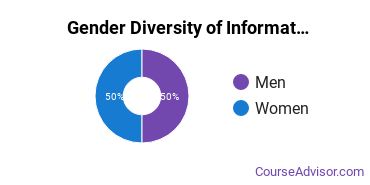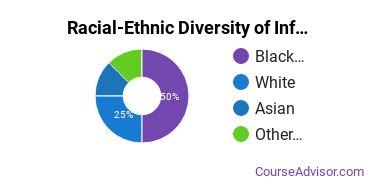Information Science at Strayer University - New Jersey
Strayer University - New Jersey is located in Piscataway, New Jersey and has a total student population of 995.
Want to know more about the career opportunities in this field? Check out the Careers in Information Science section at the bottom of this page.
Featured Strayer University - New Jersey Programs
Learn about start dates, transferring credits, availability of financial aid, and more by contacting the universities below.
BS in Computer Information Systems
Use technology to drive crucial business strategies with the online BS in Computer Information Systems program at Southern New Hampshire University.
To stay competitive in today's information technology world, employees need to have training that goes beyond traditional computer programming and IT expertise.
AS in Information Technologies
Gain the specialized knowledge and critical-thinking skills required to begin a career in tech with this online associate degree from Southern New Hampshire University.
Strayer University - New Jersey Information Science Degrees Available
- Bachelor’s Degree in IS
Featured Strayer University - New Jersey Programs
Learn about start dates, transferring credits, availability of financial aid, and more by contacting the universities below.
BS in Computer Information Systems
Use technology to drive crucial business strategies with the online BS in Computer Information Systems program at Southern New Hampshire University.
To stay competitive in today's information technology world, employees need to have training that goes beyond traditional computer programming and IT expertise.
AS in Information Technologies
Gain the specialized knowledge and critical-thinking skills required to begin a career in tech with this online associate degree from Southern New Hampshire University.
Find Strayer University - New Jersey Programs
BA in Information Technologies
Gain a well-rounded education while preparing for a career in IT with this online bachelor's from Southern New Hampshire University.
BS in Information Technologies
Build the digital know-how required to become a leader in technology with this online bachelor's from Southern New Hampshire University.
IS Student Demographics at Strayer University - New Jersey
Take a look at the following statistics related to the make-up of the is majors at Strayer University - New Jersey.
Strayer University - New Jersey Information Science Bachelor’s Program

Prospective students may be interested in knowing that this school graduates 13% more racial-ethnic minorities in its is bachelor's program than the national average.*
The following table and chart show the race/ethnicity for students who recently graduated from Strayer University - New Jersey with a bachelor's in is.

| Race/Ethnicity | Number of Students |
|---|---|
| Asian | 0 |
| Black or African American | 0 |
| Hispanic or Latino | 1 |
| White | 1 |
| International Students | 0 |
| Other Races/Ethnicities | 0 |
Concentrations Within Information Science
The following is concentations are available at Strayer University - New Jersey. The table shows all degrees awarded in this field awarded for all degree levels at Strayer University - New Jersey. A concentration may not be available for your level.
| Concentration | Annual Degrees Awarded |
|---|---|
| General Information Science | 9 |
Related Majors
Careers That IS Grads May Go Into
A degree in is can lead to the following careers. Since job numbers and average salaries can vary by geographic location, we have only included the numbers for NJ, the home state for Strayer University - New Jersey.
| Occupation | Jobs in NJ | Average Salary in NJ |
|---|---|---|
| Computer and Information Systems Managers | 14,280 | $176,690 |
| Computer Workers | 9,770 | $99,210 |
| Systems Software Developers | 8,960 | $123,370 |
| Computer Science Professors | 1,390 | $105,890 |
| Computer and Information Research Scientists | 1,080 | $127,420 |
References
*The racial-ethnic minorities count is calculated by taking the total number of students and subtracting white students, international students, and students whose race/ethnicity was unknown. This number is then divided by the total number of students at the school to obtain the racial-ethnic minorities percentage.
More about our data sources and methodologies.

